Akha Wind Instruments Films
As the transmission of ancestral oral tradition is no longer limited to the personal encounters of yore – father to son, mother to daughter, musician to student, shaman to apprentice – it is exciting for Cultural Crossroads Asia to explore new possibilities. As a way to expand the reach of the Living Legacy Project, sharing the ephemeral arts of songs, stories, and musical instruments with the ethnic diaspora of Southeast Asia and followers around the world, we are delighted to announce the launch of the Cultural Crossroads Asia You Tube Channel.
Akha Wind Instruments
Series 1: Nine Educational Films
The Living Legacy Project has devoted its first Film Series to traditional Akha Wind Instruments, introducing viewers to nine musical instruments now rarely heard in the mountains of the Golden Triangle – the Chudu End-blown Horn, Yaja Side-Blown Horn with Reed, Pipa Leaf, Jabo Bird Caller, Meli Side Flute, Hulupeu Whistle Flute, Bawlaw Central Embouchure Flute, Chulu End-blown Flute, and Meli Melo Reed Pipe.
Each film, spoken in Akha and subtitled in English, unfolds in three parts:
– Set against a backdrop of nature or the veranda or hearth of an Akha home, each story begins by featuring one of the six Master Akha Musicians who grace the Akha Oral Tradition School – Athu Pochear, Abiya Pochear, Miju Manpo, Apa Ayii, Mawleu Jupoh, or Asaw Jotaw — as they skillfully perform the instruments they learned as children from their parents and grandparents.
– According to ancestral Akha mores, each instrument, with its unique timbre, character, pitch range, and melodies, has been accorded a special role, designating who plays it, when, where, and why. This is the perfect springboard for these Akha Musicians to then describe their instrument and its role in Akha society.

– The third portion of each film takes form as a demonstration by a skilled instrument-maker, who crafts the instrument step-by-step from materials found in nature: bamboo, reed, gourd, wood, buffalo horn, and beeswax.
We hope you are inspired by these nine Educational Films that introduce
Meli – Side Flute
Akha men perform on a varied assortment of bamboo flutes for pleasure, reflection, and courtship. The Meli, a side-blown flute measuring thirty to forty-five centimeters, is designed with a blow hole cut into the side of the top end.
Young men, like the accomplished musician Mawleu Jupoh, play dulcet melodies on their Meli based on Akha love songs, birdsong, sounds of nature, or improvised tunes late into night.
Malweu describes his love of the instrument and demonstrates techniques to craft it.
Jabo – Bird Caller
During forest forays, Akha hunters tracking their prey with sling shot, crossbow, and flintlock, always travel with a Jabo bird caller to attract emerald doves.
In this film, Ulo Akha musician Athu Pochear demonstrates several calls on his Jabo whose muted tones perfectly echo the doves' gentle cooing, thereby allowing him to approach the birds undetected.
Asaw Jotaw, a skilled instrument maker, next shows how he crafts this instrument by affixing a slender bamboo pipe with beeswax to a wooden or bamboo wind chamber.
Pipa – Leaf
The Akha follow an age-old custom of playing music on the leaf, Pipa. Any supple leaf with a smooth end can be used, such as the acacia leaf, easily found in the jungle.
A musician creates a penetrating, buzzing timbre by compressing his lips around a leaf, folded in half, and blowing tones that imitate Akha speech patterns. Because the Pipa is so intimately tied to the breath and is able to convey tender lyrics of the heart, the leaf is an ideal instrument for a young couple to court and spark.
Abiya Pochear, an Ulo Akha Master Musician in Northern Thailand, plays the seemingly simple, but deceptively challenging Pipa, and reveals its place in Akha musical heritage.
Yaja – Side-blown Hunting Horn
When wild jungle prey has been successfully tracked and killed, the men of an Akha hunting party follow the path back to their village while beating drums of hefty bamboo in steady time to their steps.
These pulsing rhythms are joined by bursts of birdsong-like calls from the Yaja, a side-blown buffalo horn fitted with a bamboo or brass reed. Such a thunderous ensemble heralds the hunters' triumph, as it also alerts their families to light the cooking fires.
This film features Athu Pochear, a respected guardian of Akha culture, as he plays and relates the significance of the Yaja, and Asaw Jotaw, who demonstrates how to craft the instrument.
Hulupoe – Akha Whistle Flute
Long-established Akha custom defines that the small Hulupoe whistle flute is primarily played by Akha women, who alternately blow and sing into it as they walk along mountain paths to signal others in distant fields or forests, to frighten wild animals, and to attract a potential mate.
In this film, Master Akha Musician Abiya Pochear performs the Hulupoe and shares her childhood memories of learning how to play it from her sisters.
Athu Pochear then displays how to craft this simple, yet powerful whistle flute with no finger holes, which he cuts from a small section of bamboo.
Chulu – End-blown Flute
It is rare now to hear the wistful strains of the Chulu end-blown duct flute. This film hopes to change that with a moving performance by Apa Ayii, a Master Akha Musician who is steeped in traditional wisdom.
Apa reveals the role the Chulu traditionally played in the lives of Akha men – a source of solace for young bachelors seeking love and for widowers mourning its loss.
Musical instrument-maker Asaw Jotaw demonstrates how to fabricate the Chulu, an instrument distinctive in the range of flutes due to its unique construction, which features two chambers and an external block that directs air from one to the other.
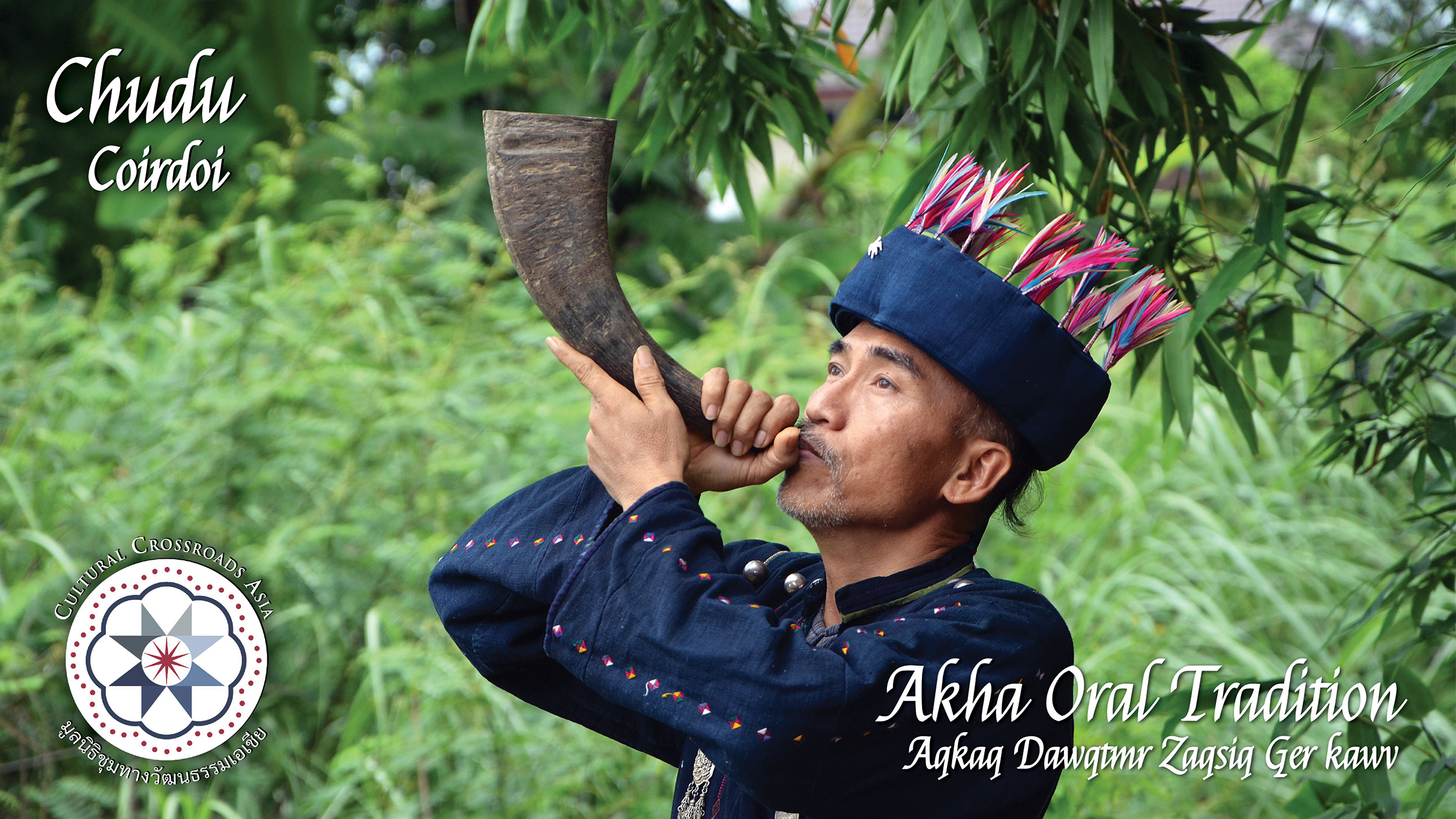
Chudu – End-blown Horn
Because of its deep timbre able to carry long distances, Akha men regularly played the bellowing Chudu end-blown horn to rally men and spirits to festivals and rites, and to warn villagers of danger
Athu Pochear spotlights the Chudu by demonstrating its mighty power and describing its significance in traditional Akha life.
This he follows with a lesson in its construction – from cutting both ends of an adult male buffalo horn, boring an air channel, and polishing the horn's body and decorating its mouth hole. (This film is coming soon!)
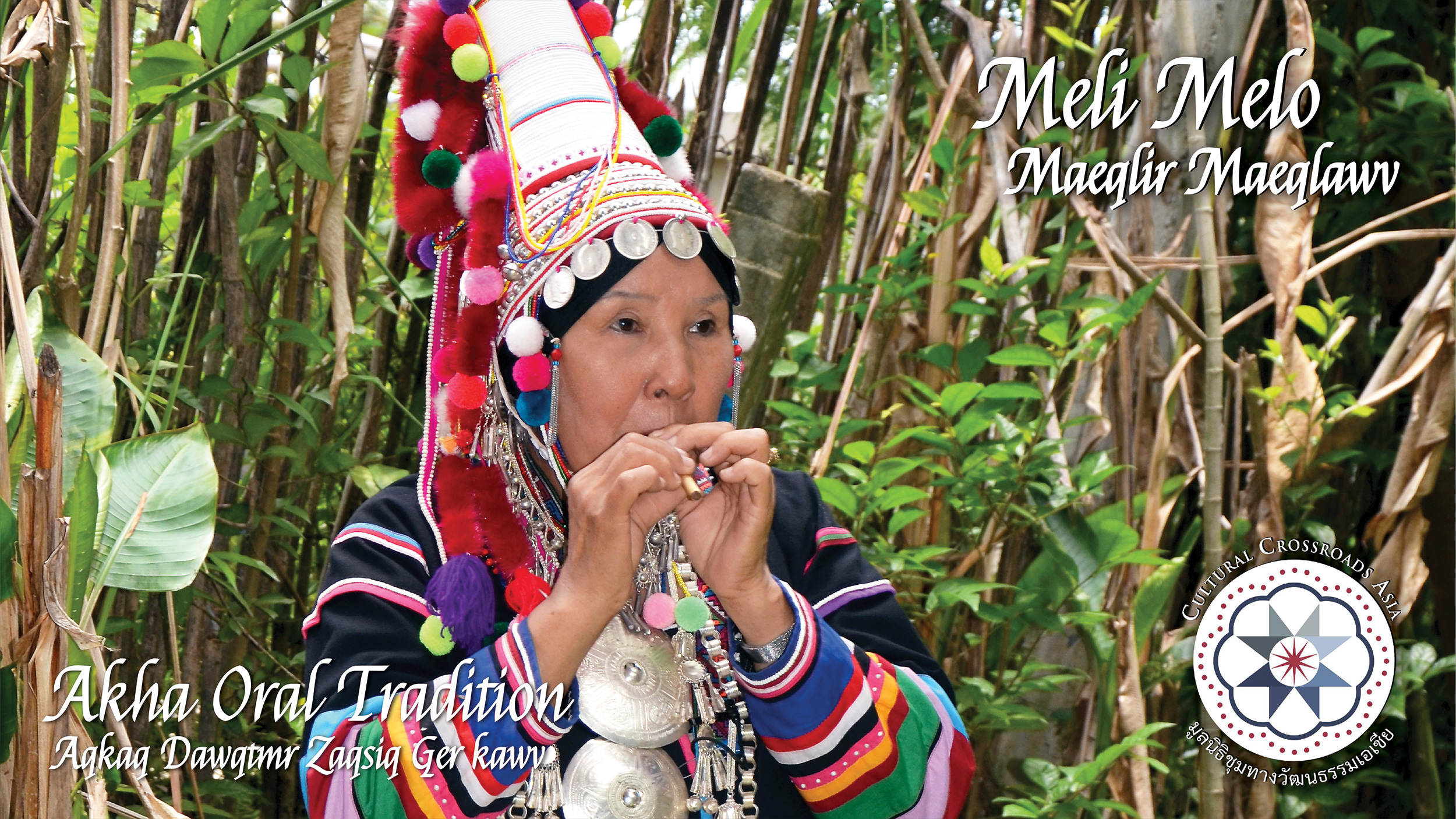
Meli Melo – Reed Pipe
Two renditions of the Meli Melo folk clarinet are presented in this film by Abiya Pochear and Athu Pochear. While their performances convey varying tunes, the general style remains simple and the timbre reedy and penetrating.
Both musicians describe the instrument's place in Akha culture, primarily as played by Akha girls for enjoyment and to express inner longings.
Master Musician Mawleu Jupoh next fabricates a Meli Melo from a slender section of fresh forest bamboo, which he pierces with three finger holes. The folk clarinet is special in the way that its vibrating reed is lanced into the side of the bamboo pipe. (This film is coming soon!)
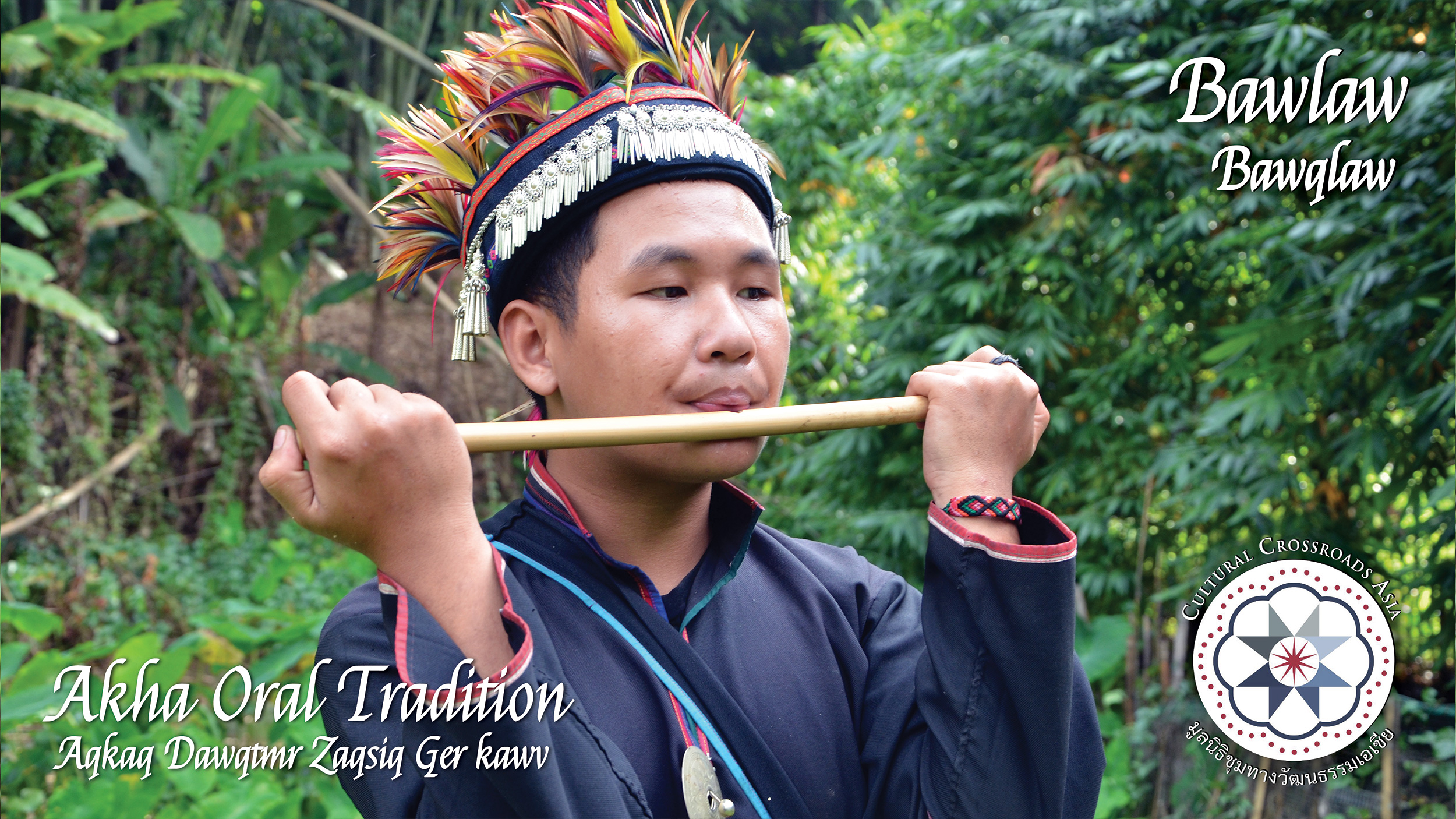
Bawlaw – Central Embouchure flute
A gifted young musician who learned to play numerous instruments from his grandfather, Mawleu Jupoh can play traditional as well as improvised melodies on his Bawlaw central embouchure flute with equal facility.
Mawleu performs two extended pieces and describes how he can produce a full range of tones on this long horizontal bamboo flute, even if it has no finger holes: from four fundamental tones he creates a series of high-pitched overtones by blowing with different strengths.
Mawleu then crafts a Bawlaw, an uncommon instrument in the flute family, by showing viewers the tricks of the trade. (This film is coming soon!)
The creation of the nine Akha Wind Instruments Films is the result of a time- and effort-intense process, and has moved through many expert hands and hearts. Cultural Crossroads Asia wishes to thank the following, for their incalculable contributions.
Master Musicians
The heartbeat of the Akha Oral Tradition School and Series 1 of our Living Legacy Films, Akha Wind Instruments, pulses each week with the life-lived wisdom, experiences, and music of our Master Akha Musicians.
To Athu Pochear, Apa Ayii, Miju Manpo, Asaw Jotaw, Mawleu Jupoh, and Abiya Pochear, we at Cultural Crossroads Asia are beyond grateful to you for sharing the treasure trove of songs and stories you have amassed in your lives with the Akha students.

Instrument Craftsmen
From the 'Hands of the Hills,' all the instruments our students perform, and the very ones that appear in the Akha Wind Instruments Films, are masterfully crafted by the musicians in the Akha Oral Tradition School.
It requires special knowledge, techniques, and tools to fabricate these instruments – from the smallest vibrating bamboo reeds set in Lajae Pipes to the massive Chudu buffalo horn.
These are the skills that Asaw Jotaw, Mawleu Jupoh, Apa Ayii, and Athu Pocher have mastered and now pass down to Akha youth.
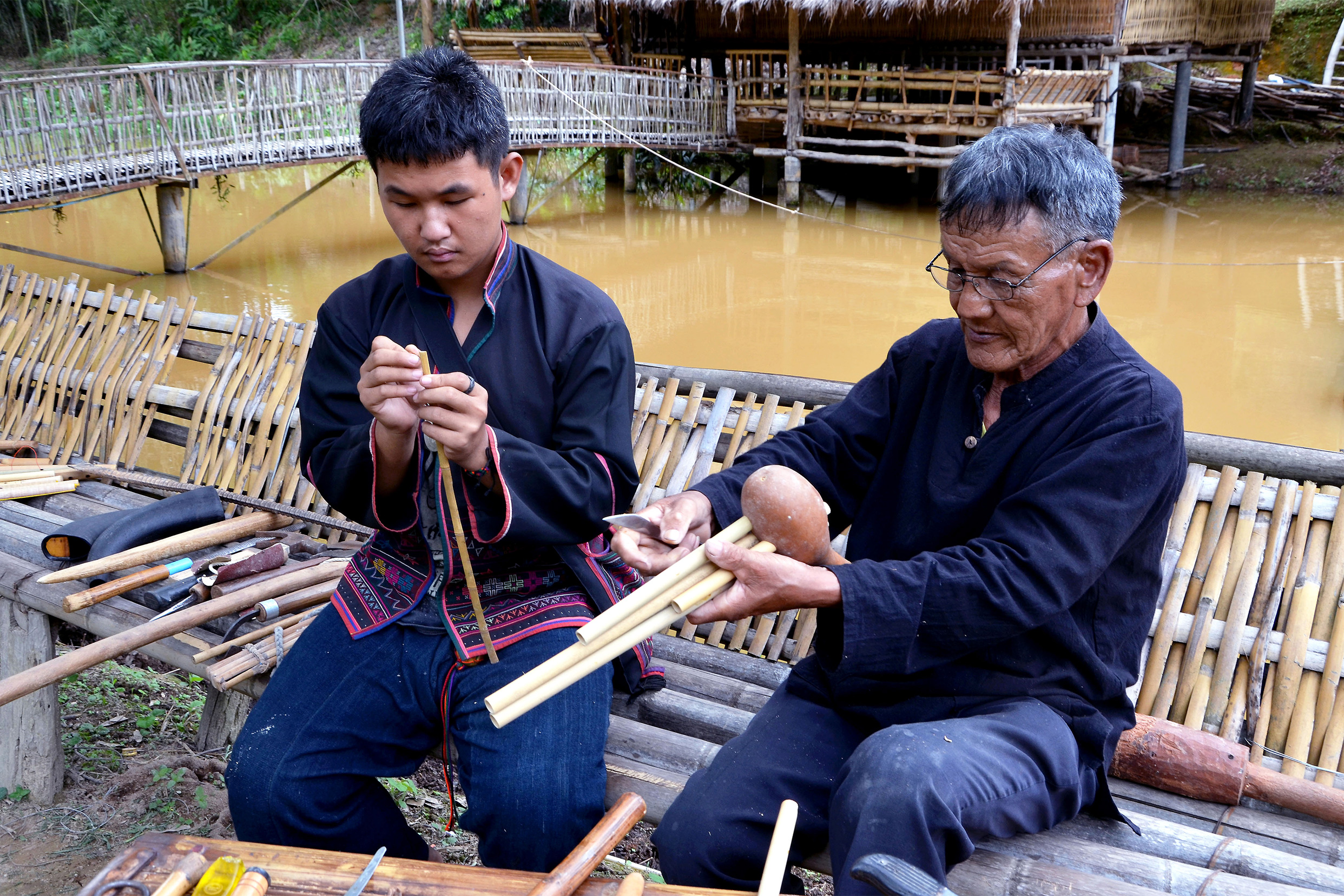
Filmmakers
Massive thanks go to videographer and editor extraordinaire, Noppajohn Khun Inyasri. Every week of our first year, he visited our school with his team, often with Gong Sangdee, to document the growth of the students' understanding and musical abilities, as well as the life-lessons of our Master Akha teachers. This experience resulted in the colorful 20-minute documentary, Akha Oral Tradition School Concert, the students' first, in Ban Saen Suk.
Khun and Gong additionally filmed this series of nine films, Akha Wind Instruments, which highlight these Akha musical traditions with such clarity, detail, and artistry. Thank you so much for helping us share our stories, Khun.
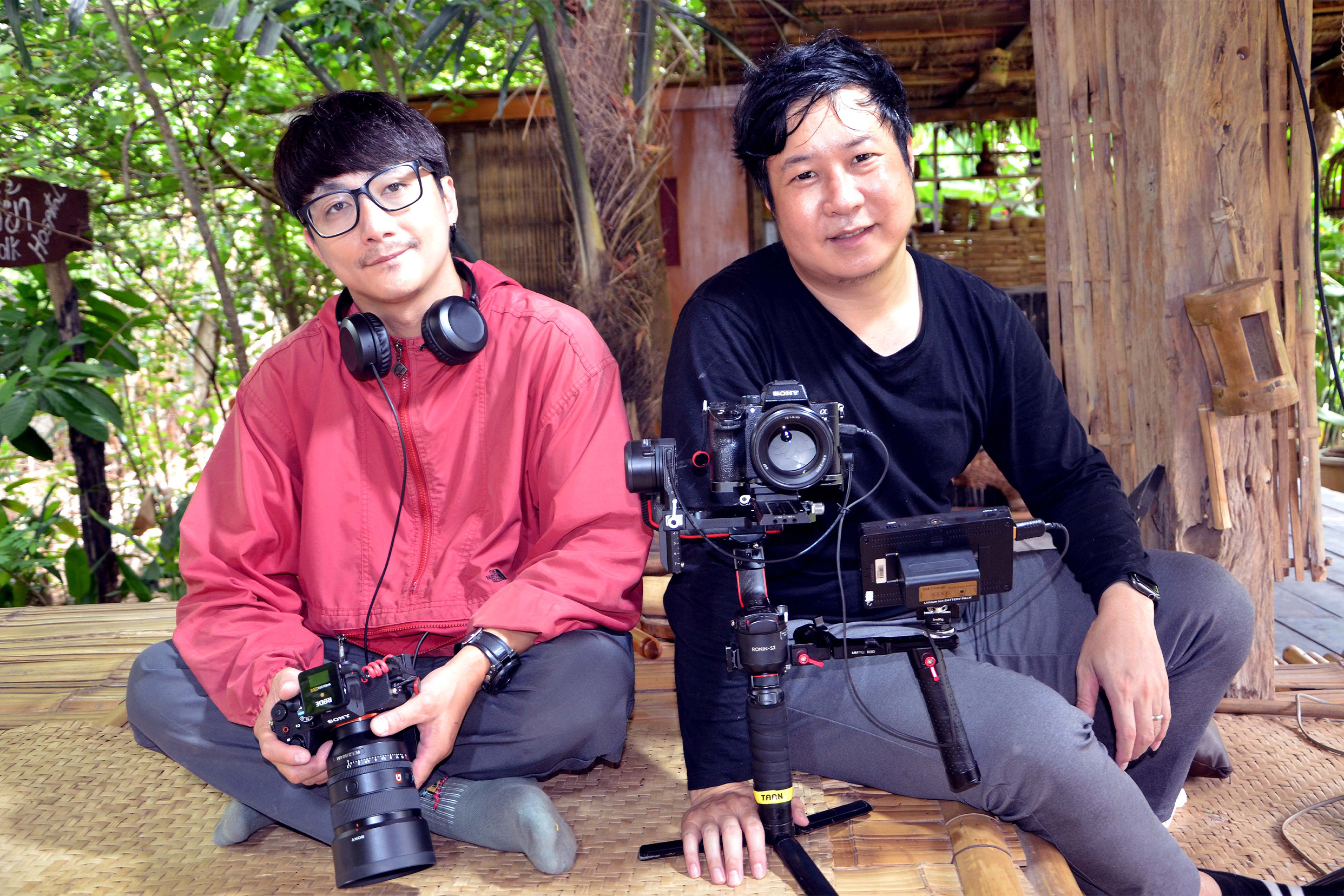
Transcribers (Akha to Akha)
In the following step of post-production, it was necessary to transcribe the Akha language spoken in these nine films into writing, using an Akha language form that has just recently been developed.
Four of the Akha Oral Tradition School teachers put their heads together over many hours and many days to accurately set down captions of the interviews in precise timelines.
Gulung guma deh to Athu Pochear, Mawleu Jupoh Miju Manpo, and Abiya Pochear.

Translators (Akha to English)
Translation is a delicate art, which, in this case, could only be overseen by an Akha person with deep knowledge of Akha culture, who also has a fine command of the English language. It was not easy to find a translator with such abilities!
Fortunately, this role was beautifully filled by Dr. Jianhua Wang (Nyawrbyeivq Aryoeq), Chair and Associate Professor of the Anthropology Department, at Yunnan Minzu University, China.
Thanks to Ayoe's insightful grasp of the material and both languages, and with the support of Victoria Vorreiter, these translations reflect the true sense of the Akha cultural content in these films.
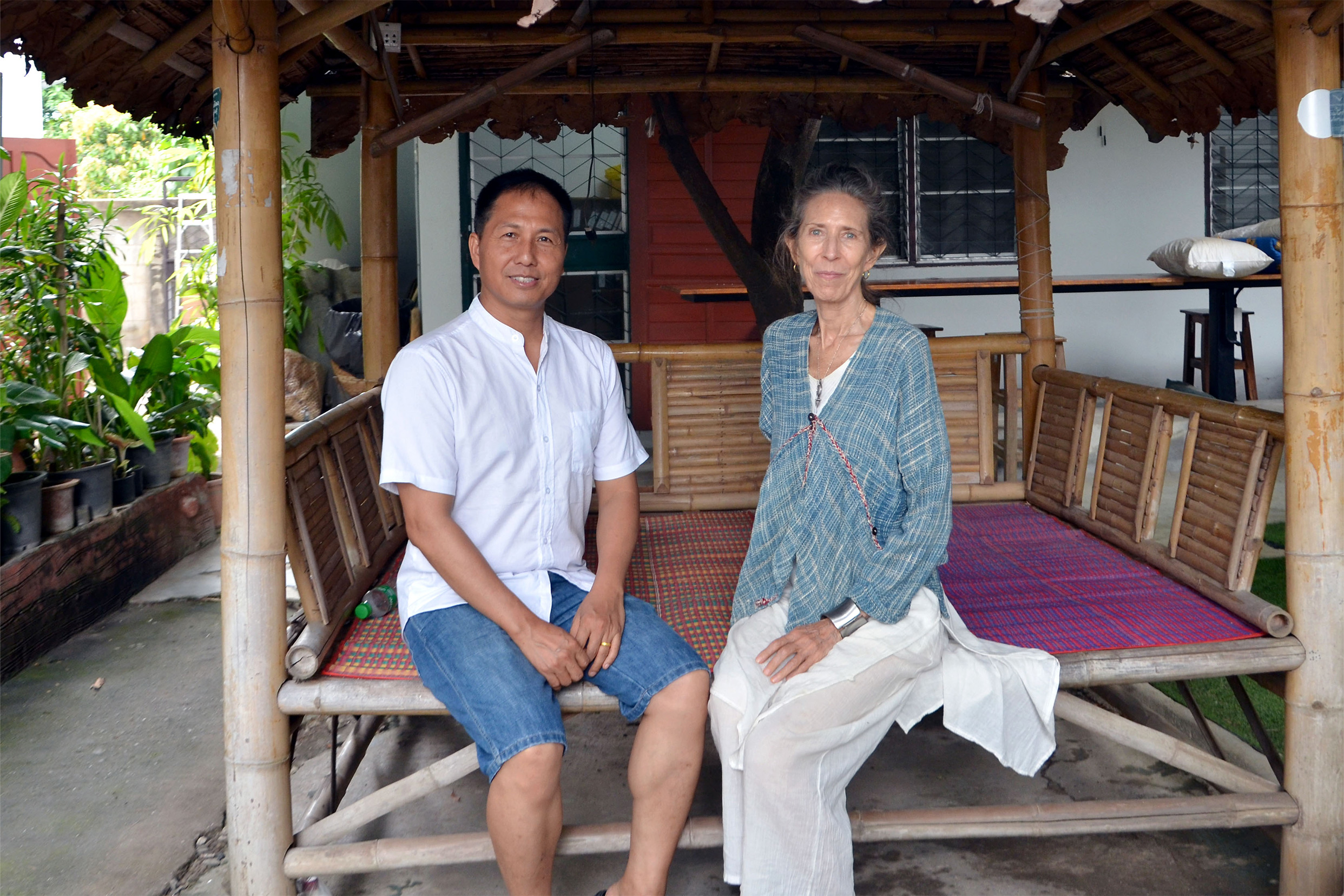
Please visit our CCA YouTube Channel.
Subscribe to keep up to date!

